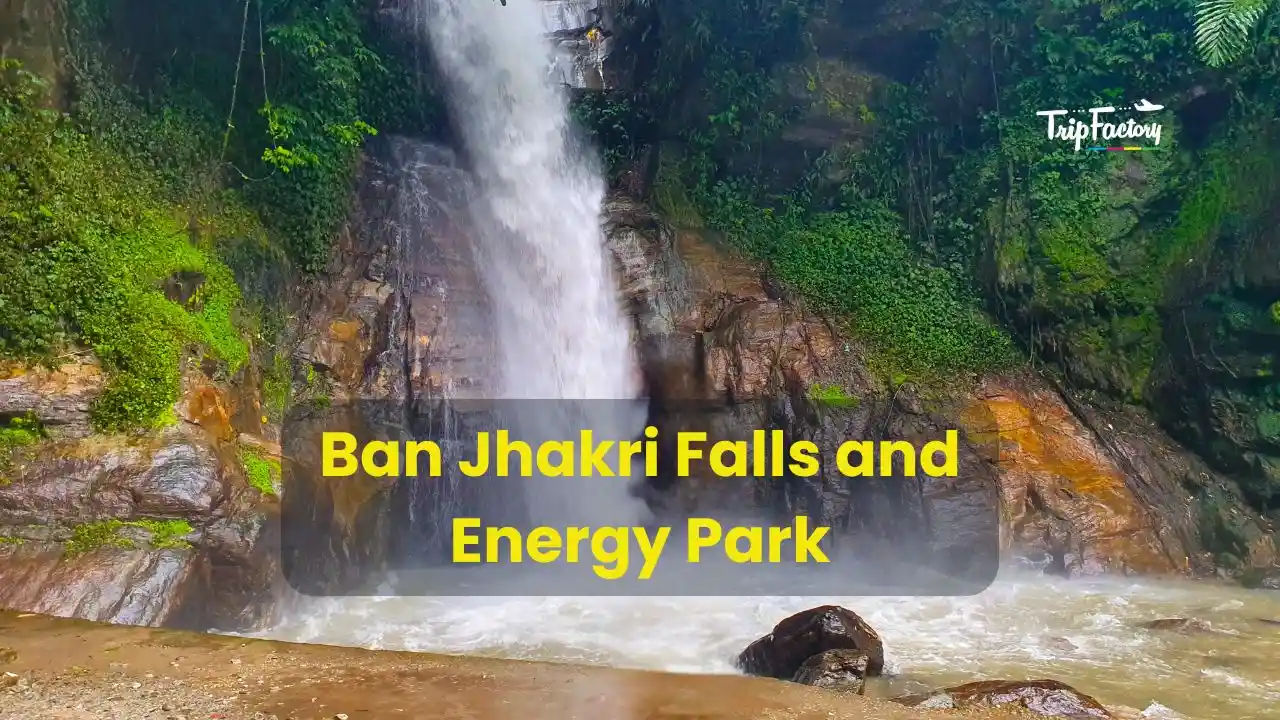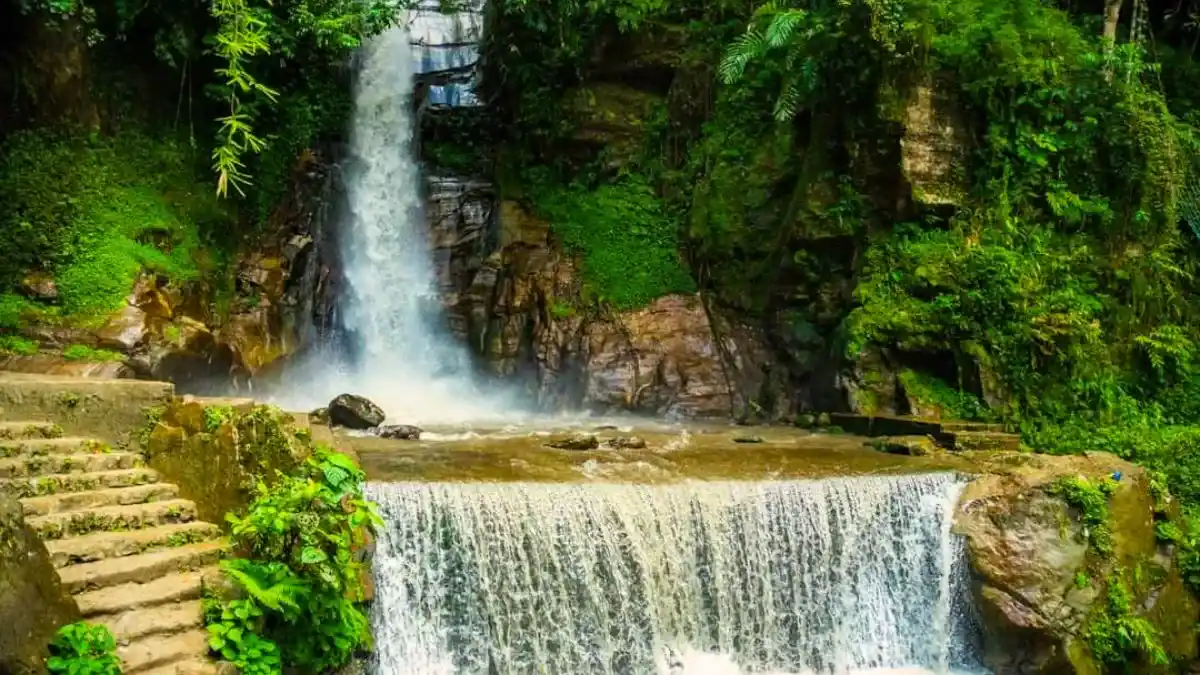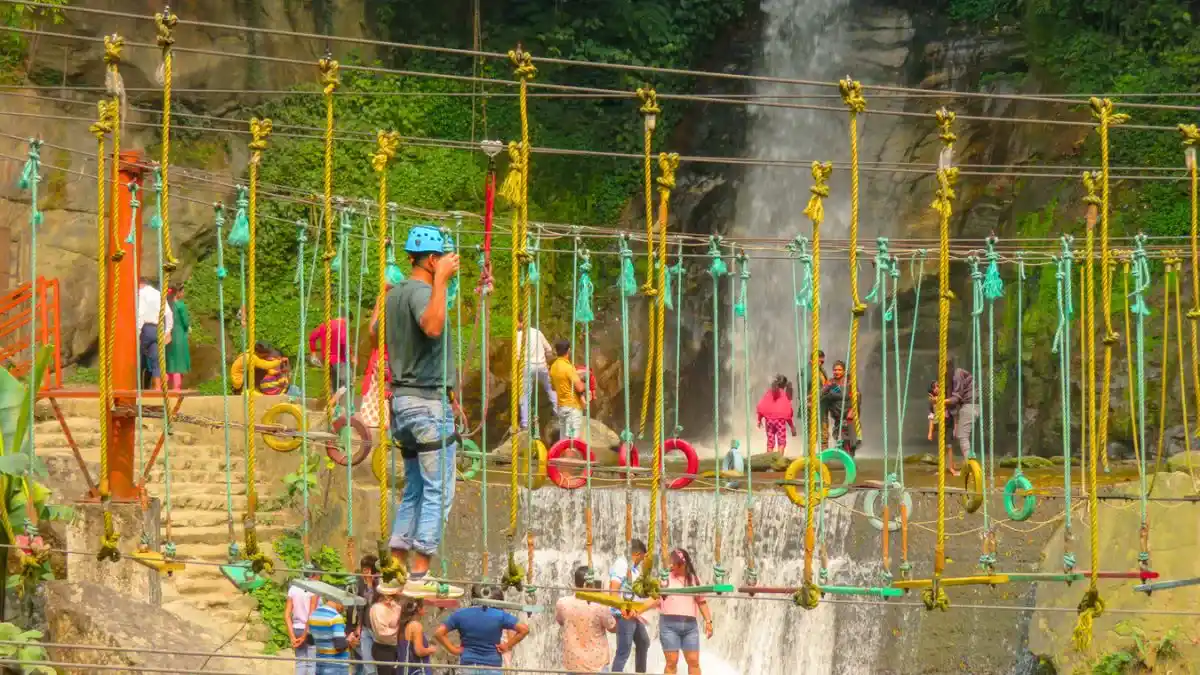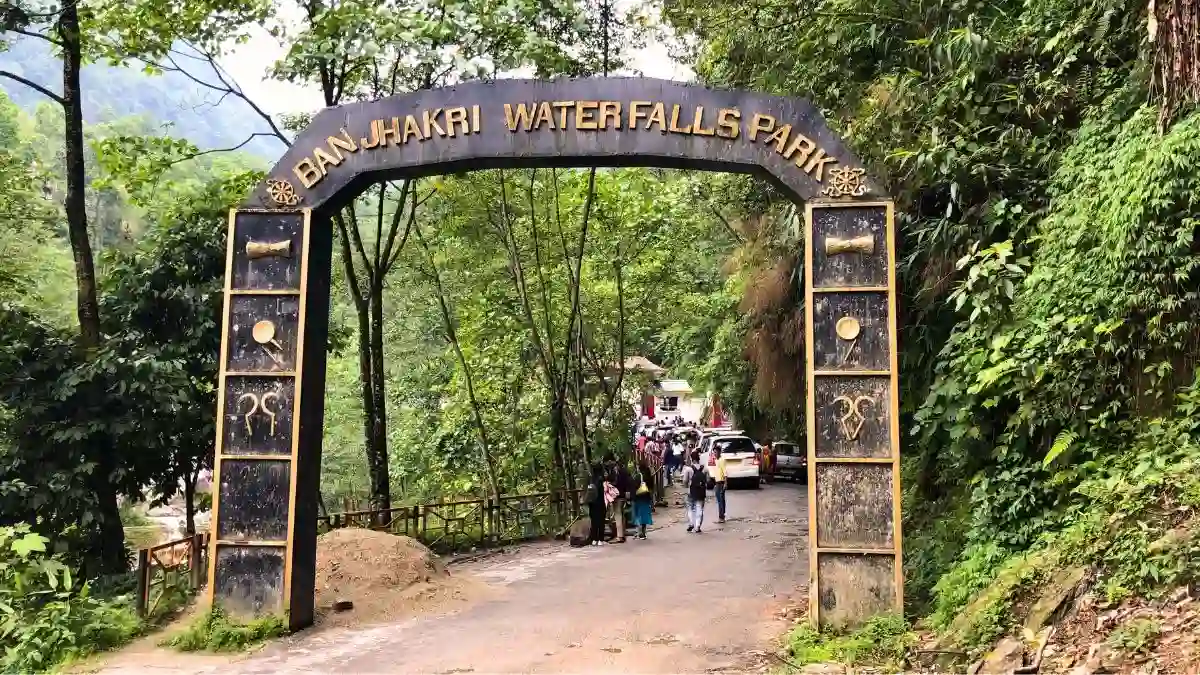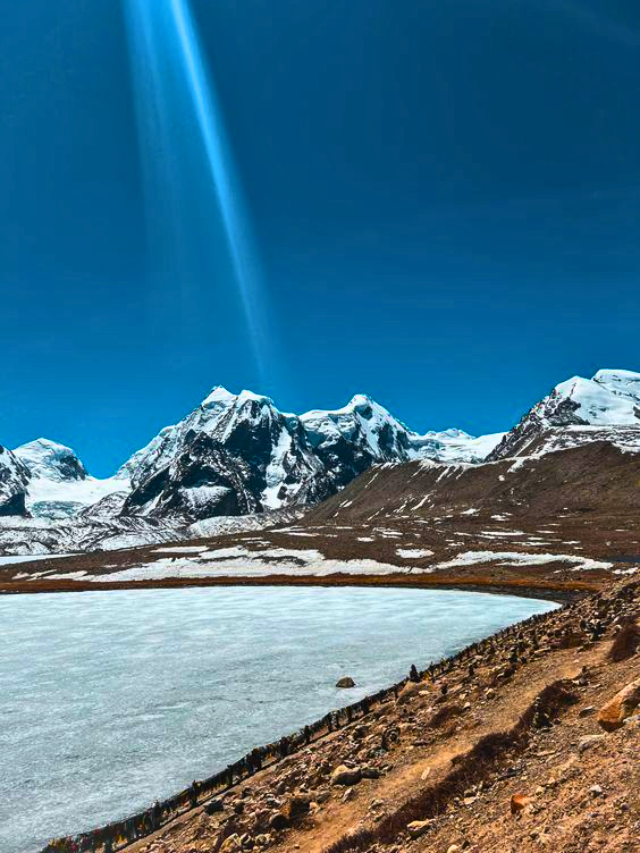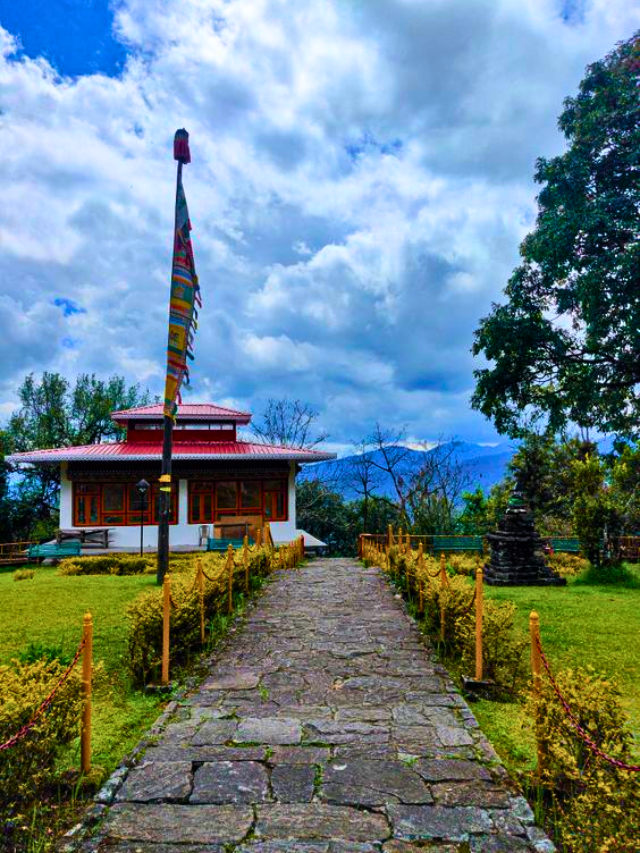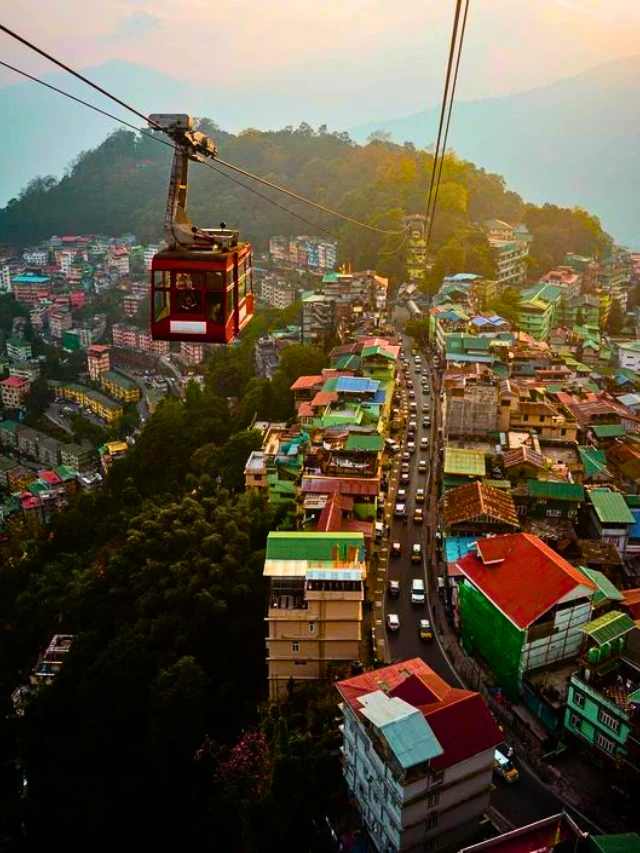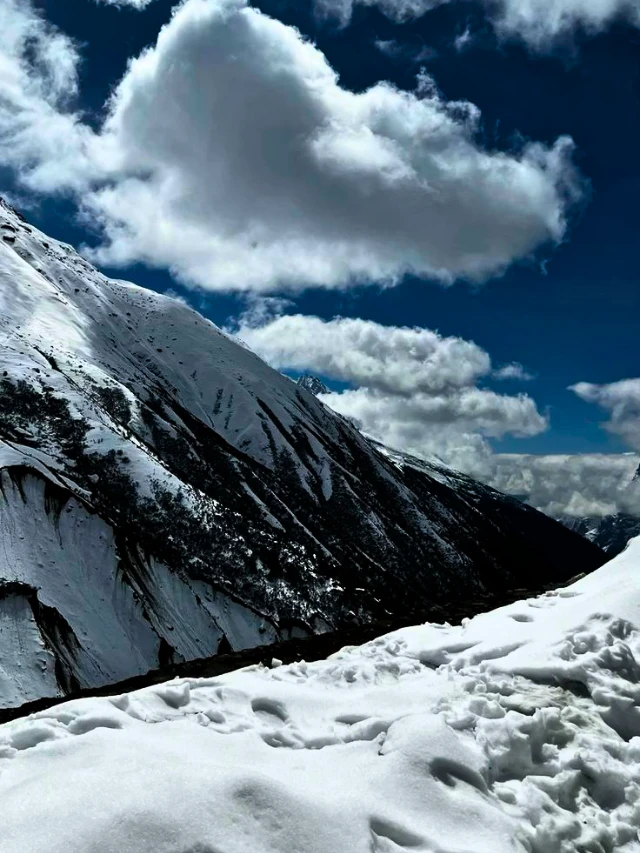Ban Jhakri Falls and Energy Park is one of the most popular places to visit in Gangtok, Sikkim. The waterfall is about 100 feet tall and surrounded by green trees which creating a peaceful spot to relax and enjoy natural environment. The sound of the water as it falls into the pool below adds to the calm atmosphere, making it a perfect place to spend quality time with yourself.
The name “Banjhakri” comes from a local legend. It’s said that Banjhakri is a forest spirit or healer who has the power to protect and heal people. Because of this legend, the falls are considered sacred and are an important part of the culture in Sikkim.
Near the waterfall, you’ll also get a Energy Park, which is a beautiful area that promotes eco-friendly practices. The park has statues of traditional dancers and various sculptures, giving you a chance to learn about energy conservation.
I think you are wondering about how far Banjhakri Falls is, so don’t worry the distance from Gangtok to Banjhakri Fall is short around 6.3 km via Ranka Rd which takes approx. 25 minute and the experience is well worth it! In this guide, we’ll walk through everything you need to know about visiting Banjhakri Falls and Energy Park in Gangtok, from the history behind it to tips on how to get there and why it’s a must see spot in Sikkim.
Ban Jhakri Falls and Energy Park
Photos of Ban Jhakri Falls
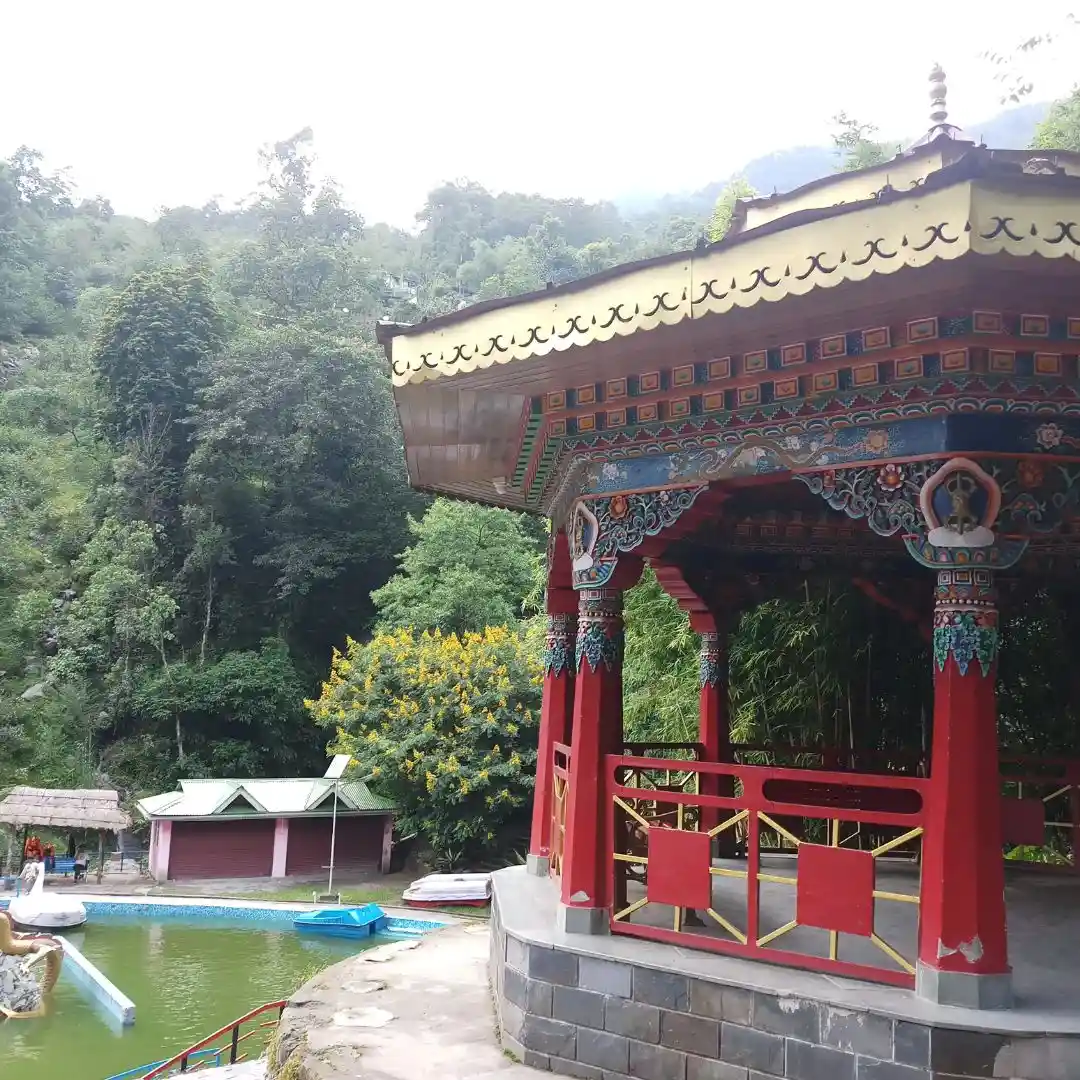
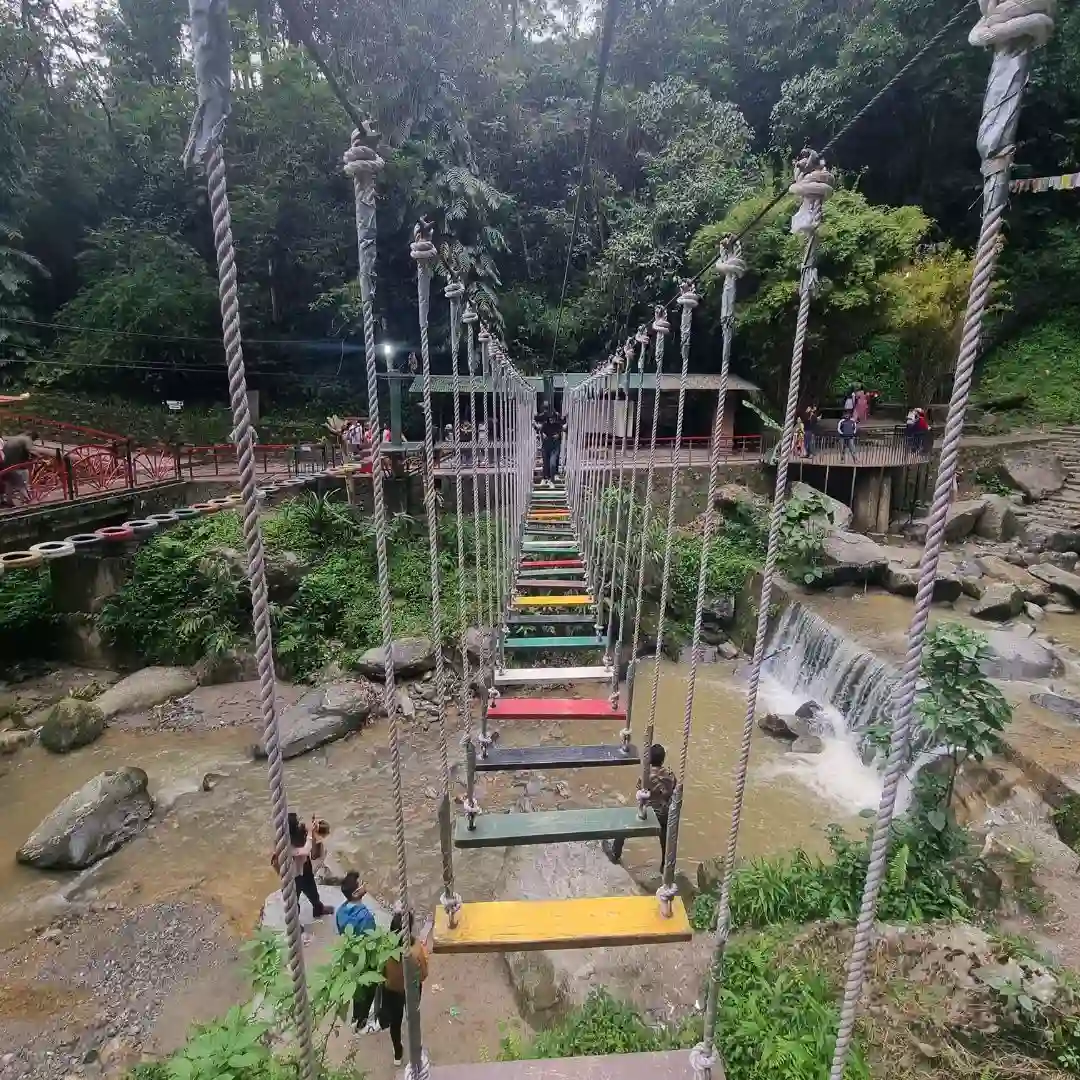


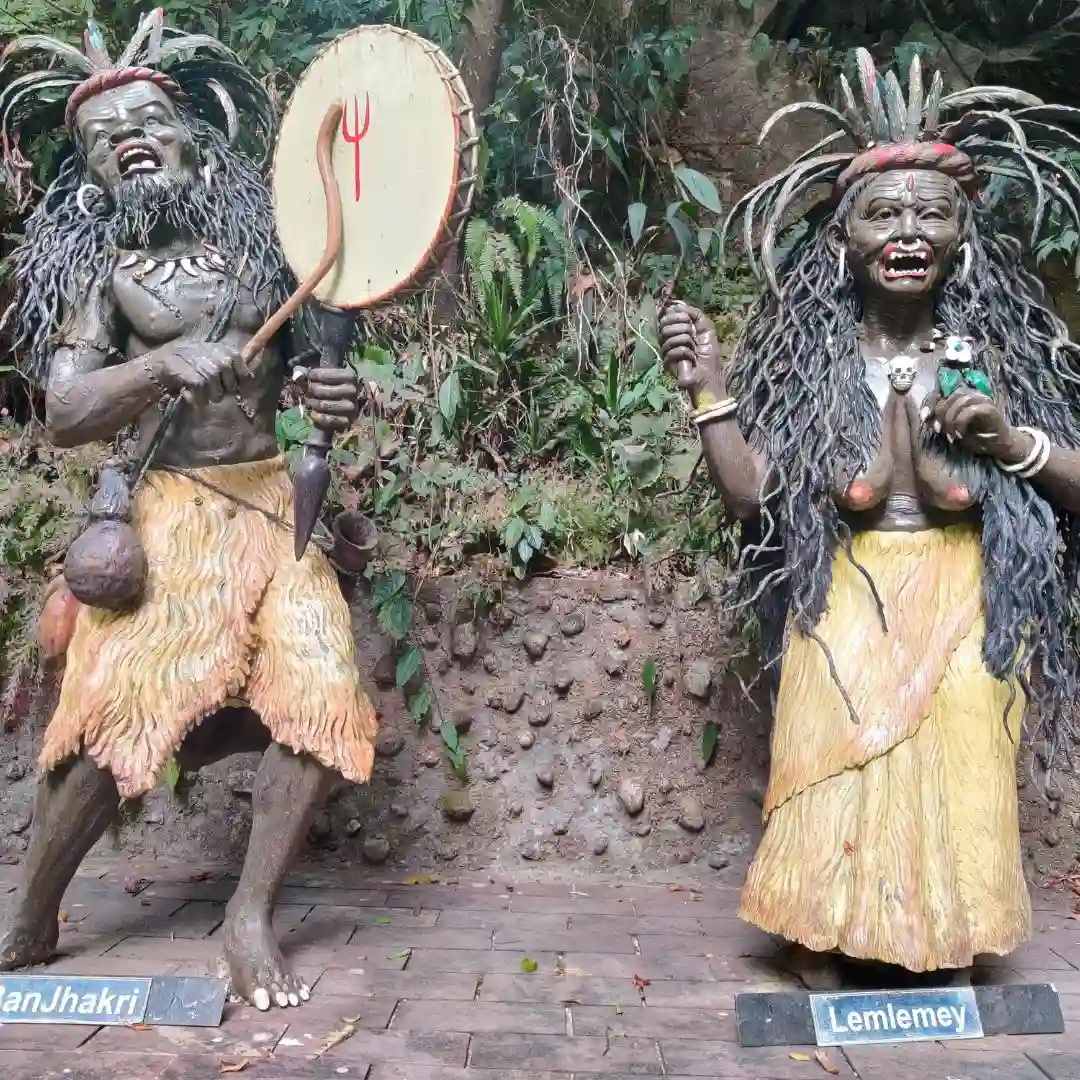
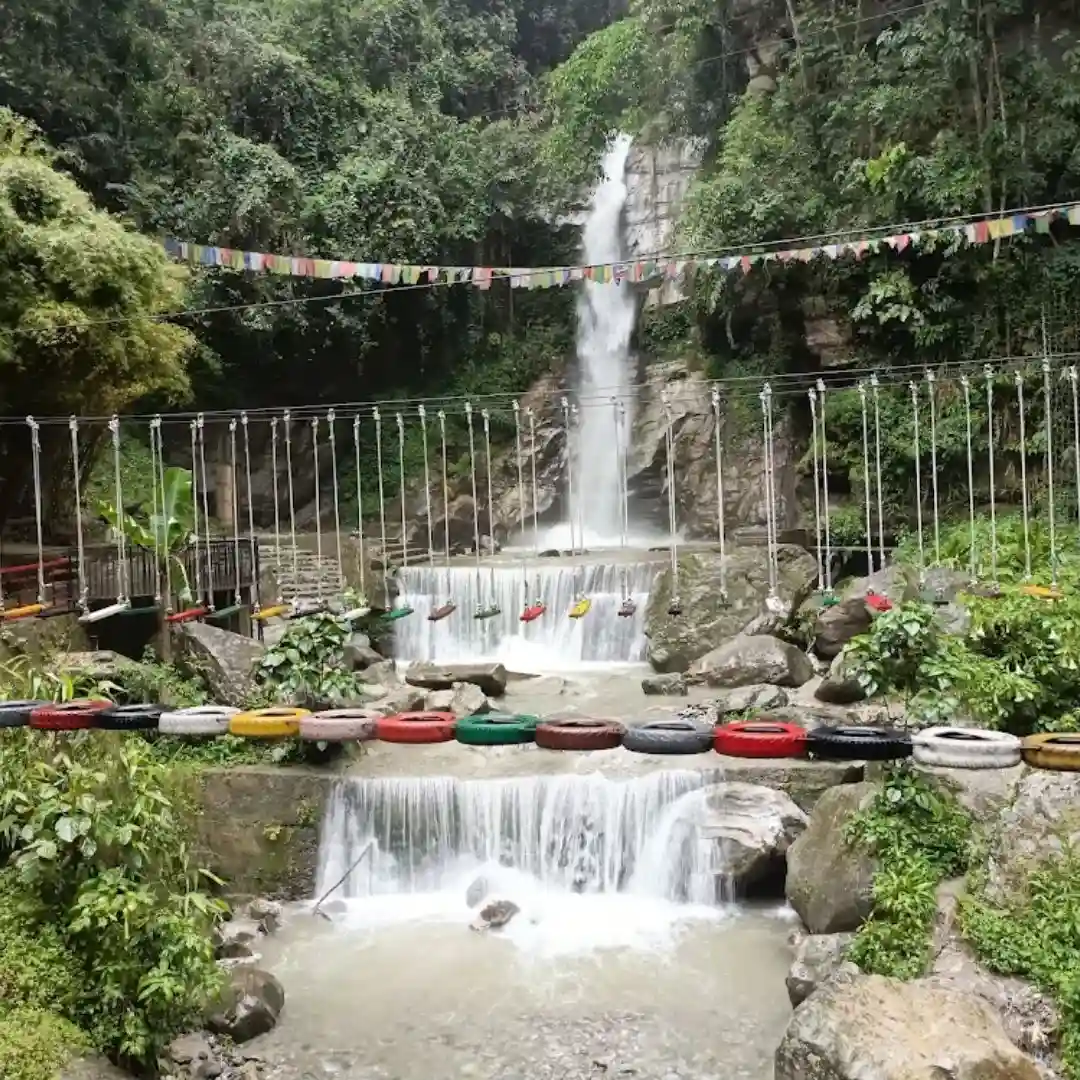
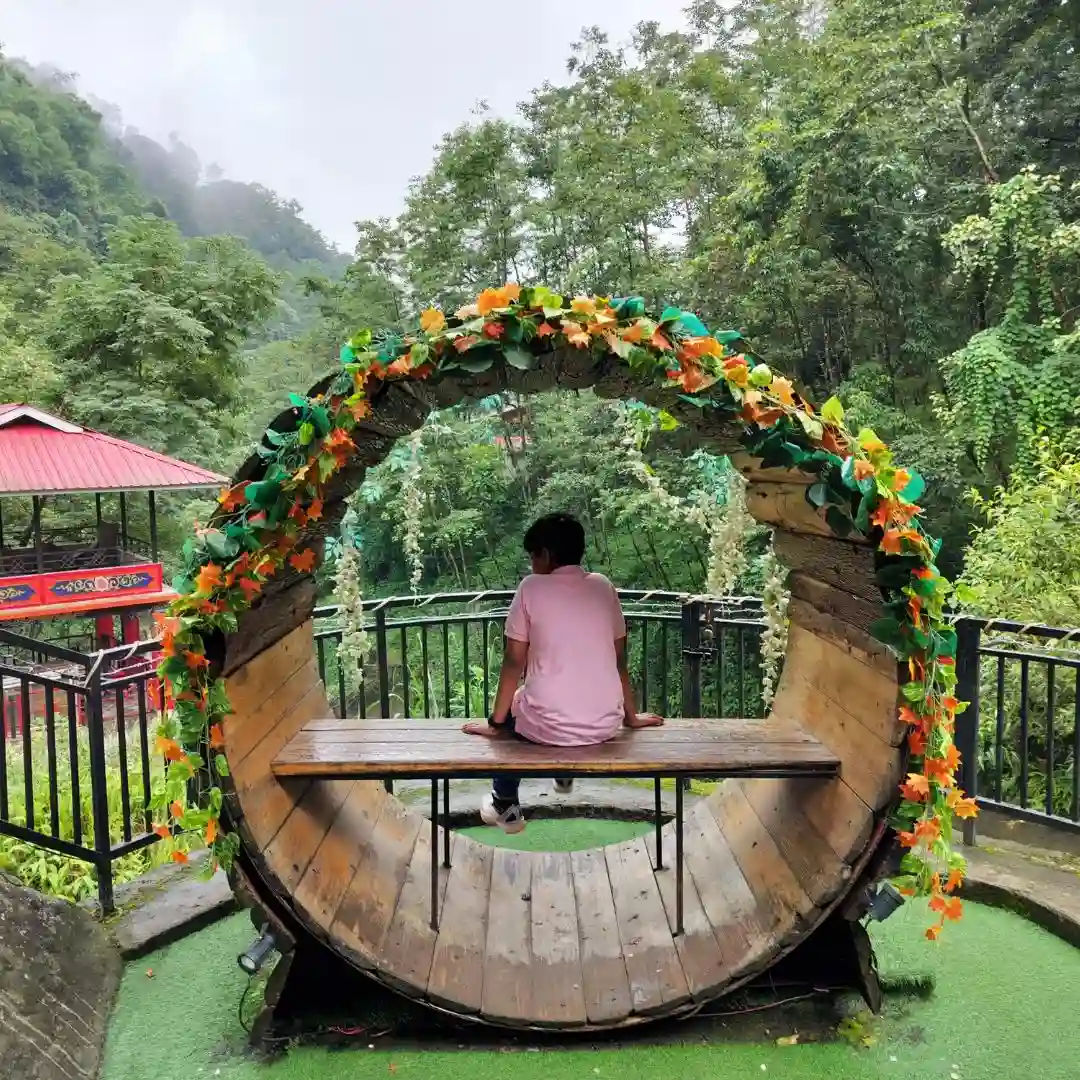
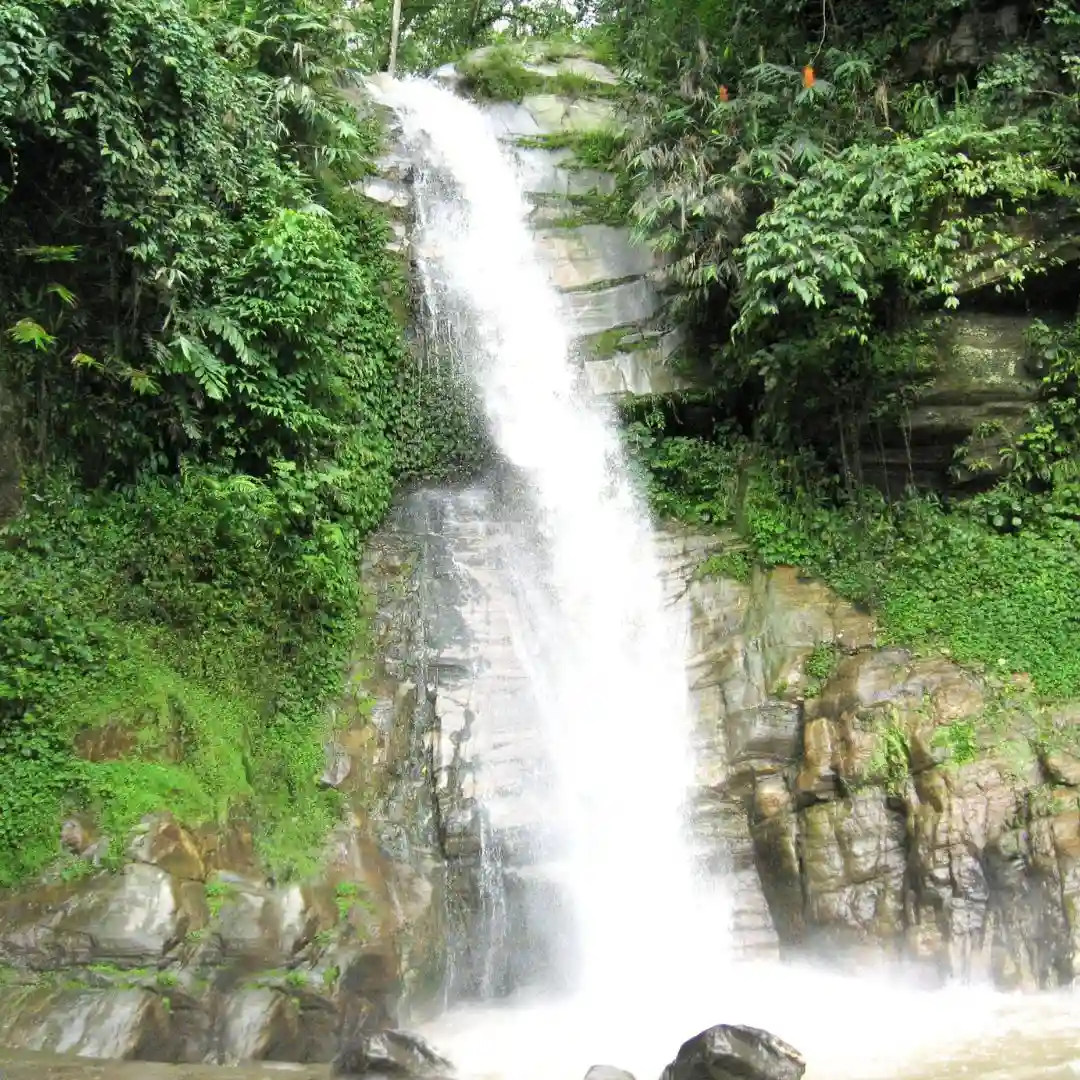
Story Behind Banjhakri Falls
The name Banjhakri comes from local stories in Sikkim. In the local language, “Ban” means forest and “Jhakri” means healer. So, Banjhakri means “forest healer.”
A long time ago, people believed that a wise man named Banjhakri lived deep in the forest. He knew how to use forest plants to treat illnesses and help people feel better. He would choose young boys who had special skills and teach them how to heal others. His wife, Banjhakrini, was also very powerful but a little scary.
Because of this story, the waterfall was named Banjhakri Falls. It is a way to respect the local culture and traditions.
When you visit the park near the falls, you will see statues of Banjhakri and other traditional figures. These show the old stories and help visitors learn about the local way of life.
What Makes Banjhakri Falls Special?
Banjhakri Falls is special because of its mix of local history, natural beauty, peaceful environment, and some light activities that make the visit more fun.
The place is linked to a well known local legend, giving it cultural value. It’s surrounded by green trees and cool, fresh air perfect for relaxing or just taking a quiet walk.
There’s also the Energy Park, where you can see creative statues, walk through well kept paths, and learn simple facts about saving energy. It’s a good place to click photos, explore with kids, or just enjoy nature.
Some visitors also enjoy picnics, walking over the small bridges, and spending quiet time near the waterfall.
Banjhakri Falls and Energy Park: A Unique Combo
Banjhakri Falls and Energy Park together offer a special experience. The falls are a peaceful place to relax and enjoy nature, with water flowing down from a height of 100 feet. It’s a great spot to unwind and take photos.
Nearby, Energy Park focuses on teaching about renewable energy and eco friendly living. It has fun statues, walking paths, and interactive displays, making it a perfect place for learning while exploring.
Together, they offer both natural beauty and education, making this place a must visit for anyone in Gangtok.
How to Reach Banjhakri Falls
Getting to Banjhakri Falls is easy! It’s located just 6.3 km from Gangtok which making it a quick and convenient trip. You can easily hire a taxi or take a local vehicle from Gangtok to Banjhakri Falls and if you’re feeling adventurous, you can even rent a scooter or bike and enjoy the fresh air while you head over.
The falls are clearly marked, so you won’t have trouble finding them. The road is well maintained, and the drive itself offers beautiful views of the surrounding hills and forests.
Things to Do at Banjhakri Falls and Energy Park
Banjhakri Falls isn’t just about enjoying the nature only it offers some unique activities that make your visit even more special:
- Discover the Waterfall’s Energy – Feel the mist and energy of the Banjhakri Falls as it cascades from 100 feet. The natural beauty makes it an ideal spot for some quiet reflection to view.
- Eco-Friendly Learning – At the Energy Park near the falls, learn about sustainable energy in an interactive way. It’s not just fun, but also a chance to understand how we can protect nature.
- Pose with Traditional Statues – See statues of Banjhakri, the forest healer, and other traditional figures. They provide a great photo opportunity and a chance to connect with local culture.
- Walk the Lush Green Trails – Explore the secrete corners of the park along peaceful walking paths, surrounded by vibrant plants and flowers.
- Find Peace in the Meditation Area – The falls offer a calm, peaceful atmosphere perfect for meditation or simply relaxing in nature.
Best Time to Visit
The best time to visit Banjhakri Falls is in spring (March to May) and autumn (September to November). During these months, the weather is pleasant and not too hot, making it perfect for enjoying the outdoors.
If you want to visit in winter (December to February), be ready for colder weather. It’s quieter at this time, so it’s great if you enjoy peace and calm.
It’s better to avoid the monsoon season (June to August), as the rain can make the paths slippery and harder to walk on.
Entry Ticket Pricing
| Adult | INR 50 |
| Child | INR 30 |
Other Nearby Attractions to Explore in Gangtok
If you’re visiting Banjhakri Falls, there are so many beautiful places in Gangtok you can explore on the same trip. Here are a few popular ones:
- Tsomgo Lake – A amazing glacial lake surrounded by mountains, just 38 km from Gangtok. Great for snow views (especially in winter).
- Nathula Pass – A historic mountain pass on the India China border, about 56 km away. It’s known for its high altitude beauty and patriotic feel.
- Rumtek Monastery – One of the most important monasteries in Sikkim, located around 23 km from Gangtok. Peaceful and spiritual.
- MG Marg (Mall Road) – The main market street of Gangtok. Great for shopping, food, and enjoying the local vibe.
- Tashi View Point – A beautiful spot for panoramic views of the mountains, especially early in the morning.
Conclusion
Banjhakri Falls and Energy Park is a wonderful place to visit in Gangtok if you love nature, calm spots, and learning about local culture. It’s easy to reach and goes well with other places like Rumtek Monastery, Tsomgo Lake, and Nathula Pass. Many people include this waterfall in their Sikkim tour package because it offers both beauty and peace. A trip to Banjhakri Falls in Gangtok is sure to leave you with happy memories and a fresh mind.
Check Our Latest Stories:
Frequently Asked Questions
What is Banjhakri Falls famous for?
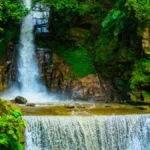
The primary attraction of this Energy Park is the waterfall, which plummets from a rocky height of around forty feet and crashes down with great power. The waterfall is surrounded by exquisitely designed gardens and monuments of the Ban Jhakri, Mangpas, Lepcha, and Lyam Lymay ancestors.
What is the entry fee for Banjhakri Falls?

Banjhakri Falls is open from 8 a.m. to 6 p.m. Take a walk in its serene surroundings and enjoy the calming sound of the river flowing as you begin your day. Banjhakri Falls admission is INR 50.
How tall is Banjhakri Falls ?
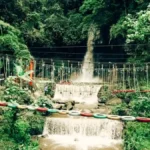
A naturally created waterfall, Banjhakri Falls is fed by springs located at a higher altitude. The height of the cascade is around 30 meters (98 feet).
What is the history of Ban Jhakri?
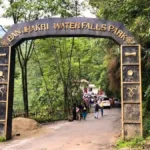
Let’s dive into a tale from Sikkim, India. Our character is Ban Jhakri, a mythical hero from Nepali lore. The term “Jhakri” translates to “traditional healer,” while “Ban” equals “forest.” Legends narrate about Ban Jhakri, the forest deity and shaman residing in a cavern, bending a knee in reverence to spirits. His birth was to protect the forests and is known as the sun’s offspring.

